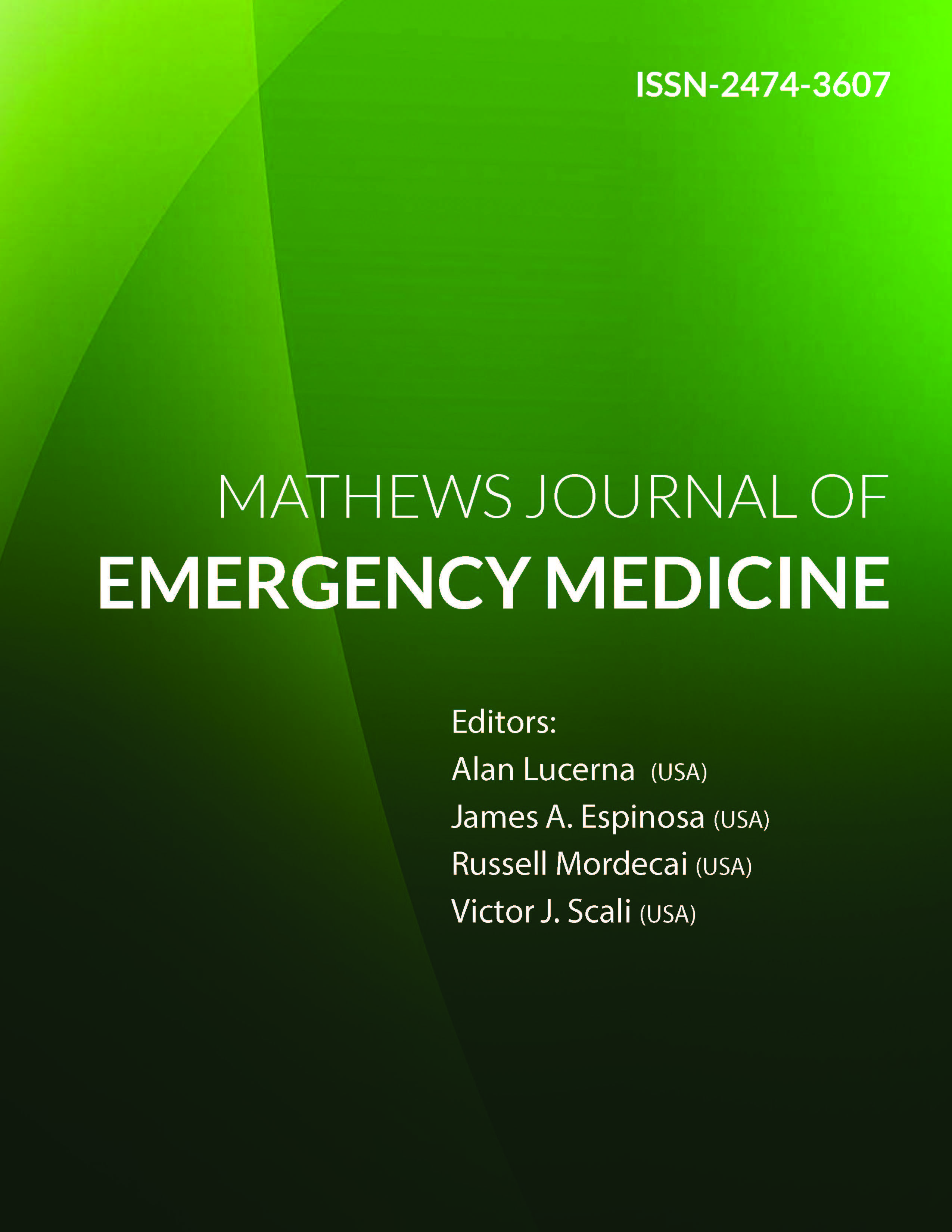
Information Links
Previous Issues Volume 1, Issue 2 - 2016
Study of Ultrasound Guided Lumbar Puncture: Simulation Study with Ultrasound Mannequins with Assessment for Provider Preference for Patient and Ultrasound Positioning
Robert Horn1, James Espinosa2, Victor Scali3
1 Department of Emergency Medicine, Saint Mary Medical Center, Langhorne, PA, USA.
2 Department of Emergency Medicine, Rowan University SOM Kennedy University Hospital, Stratford, NJ, USA.
3 Program Co-Director, Emergency Medicine Residency, Rowan University SOM, Stratford, NJ, USA.
Corresponding Author: James Espinosa, Department of Emergency Medicine, Rowan University SOM Kennedy University Hospital, 18 East Laurel Road, Stratford, NJ 08084, USA, Tel: +1 646 241 5695; E-Mail: [email protected]
Received Date: 05 Mar 2016
Accepted Date: 04 Apr 2016
Published Date: 11 Apr 2016
Copyright © 2016 Espinosa J
Citation: Horn R, Espinosa J and Scali V. (2016). Study of Ultrasound Guided Lumbar Puncture: Simulation Study with Ultrasound Mannequins with Assessment for Provider Preference for Patient and Ultrasound Positioning. Mathews J Emergency Med. 1(1): 008.
ABSTRACT
Lumbar puncture without imaging is a technique that relies on a provider’s “feel”. Ultrasound guidance has the potential to improve success rates and limit patient discomfort [1,2]. Even when ultrasound is only used to locate the correct anatomic structures to perform a lumbar puncture but not used for the procedure. Retrospectively, it has been shown that ultrasound can reduce failure rates. The purpose of this study was to use lumbar puncture simulation models to directly compare success rates using standard technique vs ultrasound guidance. The majority of participants (66.6%) preferred that the ultrasound machine be located on their right side. This was statistically significant. (p = .05).
The mean times and the number of needle adjustments for the standard (non-obese) model, with and without ultrasound, were not statistically significant. The mean times and the number of needle adjustments for the obese model, with and without ultrasound, were also not statistically significant.
There was an interesting association with training level. When the data was analyzed by PGY status, upper level PGY status participants (defined as PGY 3/4/5) took less time and showed less variation than lower level PGY status participants (defined as PGY 1/2) when no ultrasound was used. The difference was not statistically significant. Upper level PGY status participants made fewer adjustments and showed less variation in adjustments than lower level PGY status participants when no ultrasound was used. The difference was not statistically significant. In reference to time performance, the mean time shown by the upper PGY (3,4,5) was lower for all four combinations of two models (standard and obese) by the two methods (no ultrasound v ultrasound). The mean time performance for the obese model with the use of ultrasound was less for upper PGY status participants than for lower. This difference was statistically significant. (P-Value = 0.047) When teaching the procedure of ultrasound guided lumbar puncture our study shows a statistically significant difference in an upright model with the ultrasound machine located to the right. This suggests that this a reasonable setup to help facilitate the practitioners comfort and learning. There is no statistical difference to suggest that the blind (non-ultrasoundsupported) technique is faster or requires less repositions than ultrasound guided Future studies may show a difference in lumbar puncture with ultrasound on simulated models with appropriate instruction and training sessions in the technique. It is possible that with several training sessions the use of ultrasound may be a useful adjunct.
KEYWORDS
Ultrasound use in Lumbar Puncture; Ultrasound in Emergency Medicine; Ultrasound in Residency; Ultrasound Using Simulated Models.